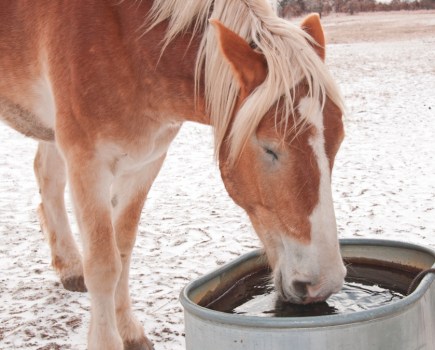The strategy of simply worming your horse when faecal worm egg counts reach a certain level may be used with some horses to reduce the use of wormers. However, faecal worm egg count tests do have their limitations. As the name of these tests clearly states, they can only detect the presence of eggs in the horse’s droppings, and are limited to detecting a few roundworm species: small redworm, large redworm and large roundworm.
So even if you get a low egg count reading, your horse may be harbouring a high and potentially fatal number of larvae, which don’t produce eggs. With this approach, you’ll at the very least need to worm your horse in the late autumn/winter against encysted small redworm larvae, and in the spring and autumn against tapeworm.
So the answer isn’t a straightforward decision between worming and faecal worm egg count tests. To ensure the health of your horse, it’s advisable to use the faecal worm egg count tests as an integral part of your worm control programme.

Once prepared, your horse’s sample will be looked at under a microscope
When using the Faecal Worm Egg Counts (FWEC) approach requires you, the horse owner, to supply a poo sample from your horse. When your horse’s sample arrives at the lab, this is what happens:
STEP 1: First 3g of faecal sample is weighed out and then diluted, with 42ml of saturated salt solution.
STEP 2: Using a pestle and mortar (that’s right people a pestle and mortar!) the sample is ground up with the solution. Emma tells me the solution acts a ‘floatation medium’ – translation: something for the eggs to float to the top of!
STEP 3: Next the solution is sieved using…a tea strainer. This removes all the debris leaving just the liquid and eggs (if there are any).
STEP 4: With a pipette the solution is put into a McMasters Chamber, a small device broken up into counting chambers. These chambers are used as a guide to work out how out the egg count.
STEP 5: Finally the solution can be looked at under a microscope. If eggs can be seen in the chambers they’re counted then multiplied by 50 to get the total egg count. For example if there are eight eggs in the two chambers that gives you a worm count of 400eggs per gram which indicates that the horse needs worming.








